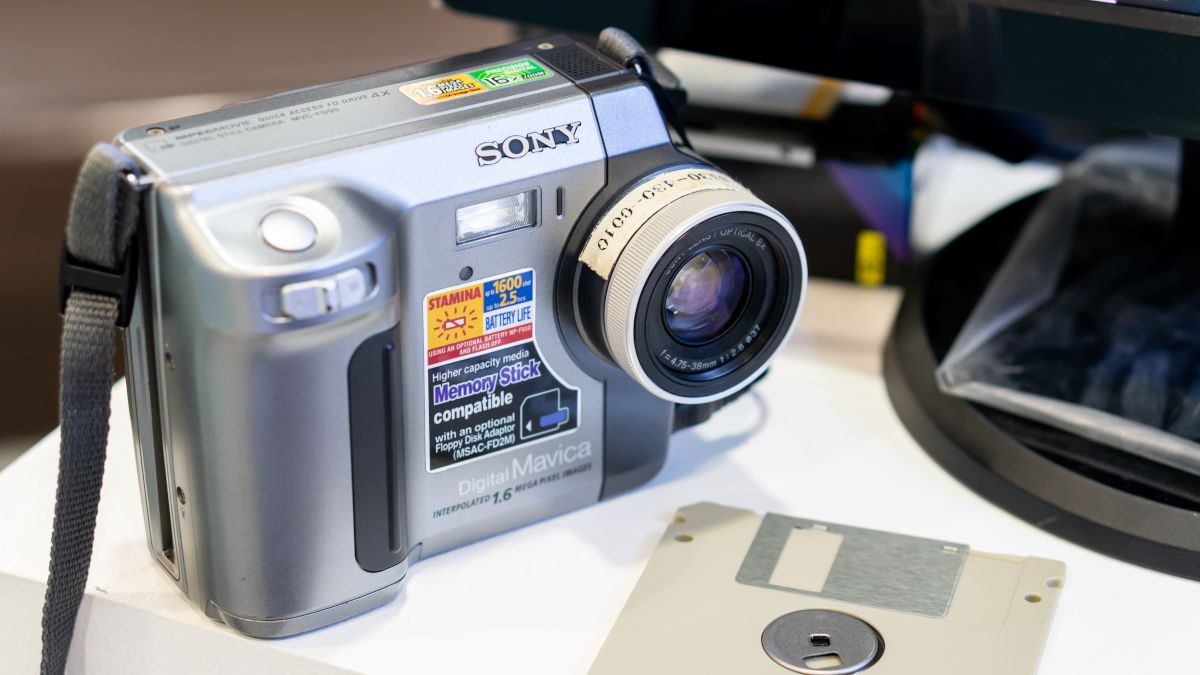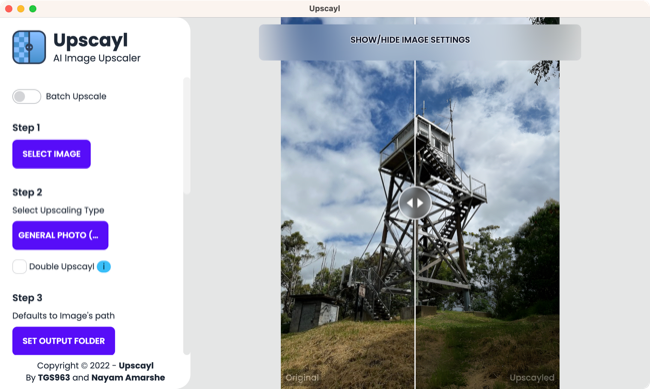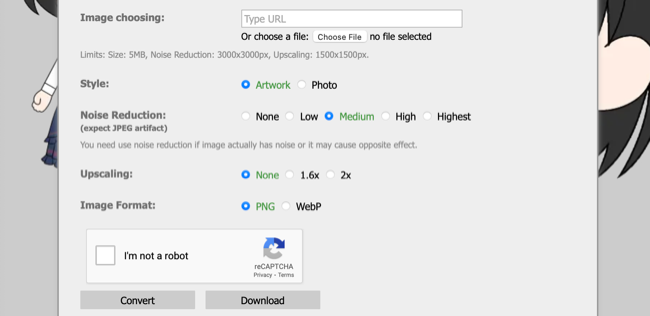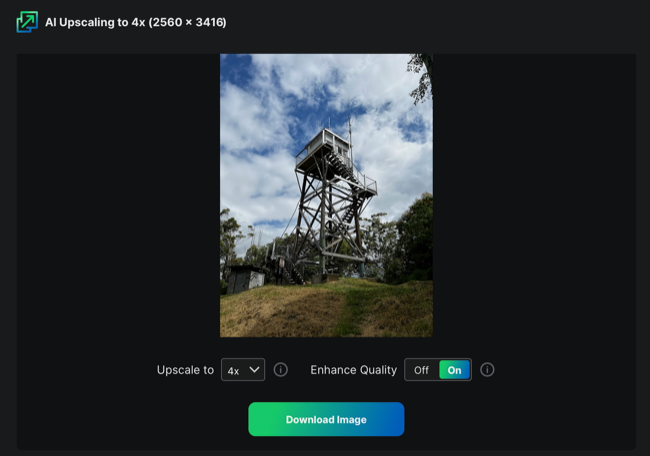Turn your blurry old photos and videos into high-resolution masterpieces with the power of artificial intelligence. Machine learning can intelligently enhance your still and moving images, with both free and paid tools available that run natively and in the cloud.
What Is Upscaling?
Upscaling simply means increasing the size of an image or video. This is done by enlarging the resolution, for example going from an HD (1920x1080) source to a 4K upscale (3840x2160). Upscaling involves adding missing pixels to an image, and the technique itself is nothing new. Older upscaling techniques simply involve "stretching" the image by duplicating pixels, or using dithering.
Modern techniques use artificial intelligence (AI) to add a superior level of detail. AI is "trained" to recognize certain features like faces, clouds, grass, or trees so that predictions can be made about what a higher quality version of the image should look like. These techniques have come a long way, but they're still far from perfect. Matching the upscaling technique to the source image or video can drastically alter results.
You can use AI upscaling tools that run both locally on your computer or run in the cloud.
Image Upscaling
Take a low-resolution, pixellated, and noisy image and run it through an upscaler to get something you can print, use as a desktop background, or share with friends in better quality. Upscaling an image isn't too time-consuming nor does it require a particularly powerful computer (for native solutions).
Upscayl (Free)
The best place to start if you're looking for a free upscaler for single or batch jobs, Upscayl is a free and open source image upscaler that runs locally on your Windows, Mac or Linux machine. It features an easy-to-use user interface, multiple upscaling options, and the ability to customize output image type (JPG, PNG, WebP) and location.
Results from Upscayl are impressive, with options for upscaling standard photographs, digital artwork, and sharpening images too. The tool did better than some of the web-based options we tried out, and processing times were relatively fast (less than 10 seconds on our M1 Max MacBook) with options to "double upscale" to much higher resolutions.
This is the place to start if you have a hefty photo library or digital artwork collection that needs upscaling. Upscayl gives some of the paid options on this list a run for their money.
Topaz GigaPixel AI ($99)
If money is no object and you want the best upscaling tool money can buy, Gigapixel AI is the app for you. The app promises to upscale images by up to 600%, and the tool has made quite a name for itself among professional circles. Despite its reputation, $99 seems like a fair price to pay if you're serious about upscaling and are looking for a buy-it-outright tool. You can also download it and try it out before you buy to see the results for yourself.
Gigapixel AI includes some enhancements you won't find in free options, like Face Recovery AI which is specifically designed to work magic on low-resolution faces. The app can also remove blocky compression artifacts which are often present on heavily compressed images.
Use Gigapixel AI as a standalone app, in Photoshop as a filter, or as part of your Adobe Lightroom Classic workflow. There's no cloud component to this one, the app runs natively on Windows or Mac computers.
waifu2x or Waifu2X.io (Free)
Based on the waifu2x project, waifu2x is an online tool that can be used to upscale your images in just a few clicks. The project was originally designed to upscale anime-style artwork with minimal loss in quality but it also works with photographs to a lesser extent.
The project's demo website is a relatively simple form that allows you to input a URL or upload an image, then select the type of image, how much noise reduction to apply, and the desired level of upscaling (up to 200%). You'll then be able to download your image. Alternatively, you can download the waifu2x tool from GitHub and use it via the command line.
Also available is Waifu2X.io, which is unrelated to the original project but offers up to 10x upscaling. Both upscalers are powered by the same underlying engine, though the latter can be used to upload more than one file at a time.
Upscale.media by PixelBin (Free with Paid Options)
Upscale.media is a web-based upscaler that allows you to upscale an individual image up to 400% for free. Simply upload your image, let the tool do its work, then tweak the upscale ratio or enable the "Enhance Quality" toggle for even better results. These additional enhancements remove artifacts, balance sharpness, and attempt to maintain a natural look.
The service is powered by PixelBin.io, a separate service that allows you to upscale images in bulk. Create a free account and get 45 credits (good for 45 upscales) or opt for a paid tier starting at $29/month (300 credits). The premium service gives you access to background erase tools, supersampling tools, and a watermark remover too.
This web-based tool is geared toward natural-looking photographs, so our results were better than waifu2x but we'd still favor Upscayl running locally if your computer is up to the task. If you're in a rush or need to upscale something and you can't install a third-party app, Upscale.media is ideal since you don't even need to sign up for an account.
Video Upscaling
Upscaling a photo is like upscaling a single frame of a video, so video upscaling is naturally a far more resource-intensive process. Much like the requirements for generating AI images with Stable Diffusion, a powerful computer will go a long way to cutting down processing times when running a native video upscaler, particularly when it comes to your GPU. (In fact, if you have the right NVIDIA GPU, it can now automatically upscale any video you watch in your browser using an AI-based feature called Video Super Resolution.)
Video2X (Free)
Video2X is a great place to start upscaling videos. You can either use Video2X as a standalone Windows app or by leveraging the power of Google Colab to borrow a powerful GPU for up to 12 hours at a time (instructions here). The app uses a combination of waifu2x, Anime4K, SRMD, RealSR, and Real-CUGAN upscalers and focuses largely on upscaling animated works including anime, CGI, and cartoons.
That said, there's no reason you can't try and use Video2X for all sorts of upscaling projects. It works with videos, GIFs, and static images and can upscale, clean up, and even interpolate frames. You can take 360p videos to 4K resolution or convert a video at 30 frames per second to one that runs at 120 frames per second.
The app features a user interface that makes it easy to set up batch jobs and pick ouput settings like scaling ratios or upscaling types. You can also use the app via command line or deploy on macOS or Linux using the container file with a tool like Docker or Podman.
Topaz Video AI ($299)
Topaz Video AI is probably the best video upscaling tool you can buy, with a price tag to match. Though $299 seems like a lot of money (it is), Topaz Video AI is yours to keep once you've paid for it, with no ongoing fees to speak of. That said, you'll need to have a powerful computer (running either Windows or macOS) to make the most of the app.
The app can produce 4K or 8K videos by intelligently optimizing source files and carrying enhancements over between frames. This helps to reduce the glitchy effect you get by doing this frame-by-frame in a still photo upscaler and then combining the results. It works for both "natural" videos, computer-generated imagery (like video game footage), and animation (like cartoons and anime).
On top of upscaling, you also get a suite of tools for deinterlacing video, recovering lost details, interpolating frames (with up to 4x slow motion frame generation), and noise reduction for removing artifacts and grain. It's a powerhouse solution, that requires a powerhouse machine, so make sure to try it out before you buy using the free trial.
Pixop (Price Varies)
If you're looking for something that provides a similar level of results to Topaz Video AI but that also runs in the cloud, Pixop might be worth a look. It's an upscaler that removes the requirement for a powerful computer (or a very long wait) by outsourcing processing to Pixop's servers. There are various improvements available, including super-resolution which can upscale video up to 8K resolution.
If you go this route, you'll pay per gigapixel. You can work out a rough price using the Pixop Pricing page. You have the option of removing unsightly interlacing and noise, optimizing the image, and performing a frame rate conversion if you want. It's expensive, but it could be cost-effective if you only want to perform a small job. With the first month discount (25%) Pixop will charge only $22.70 for 30 minutes worth of video upscaling, or $55.03 if you want to add video restoration too.
If you don't want to pay nearly $300 for Topaz Video AI, lack the powerful computer on which to perform the upscale yourself, and only want to perform a small task (like upscaling a wedding video or personal project), Pixop might work for you.
waifu2x-Extension-GUI (Windows, free) or waifu2x Video (Mac, free)
Another completely free solution based on the waifu2x upscaler is two projects for Windows and macOS. waitfu2x-Extension-GUI is a Windows native app that uses a variety of upscaling tools including NVIDIA's RTX Super Resolution to upscale images, GIFs, standard video, animated video, and computer-generated imagery with full frame interpolation and frame analysis.
waifu2x Video is a macOS-native solution that leans on waifu2x for a solution that mostly favors animated video upscaling. It's a lot less developed than the Windows alternative but it has an easy-to-use user interface and works on macOS 10.15 and above.
Happy Upscaling
Modern upscaling depends on machine learning where computers are trained to recognize features and fill in details intelligently. The rise of AI over the last few years is coming to a head with increasingly noteworthy projects like ChatGPT and tools for generating images and artwork that raise ethical questions.
You can use AI to improve existing videos and images with the tools featured above, but what about watching a movie generated entirely by AI?




